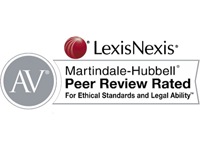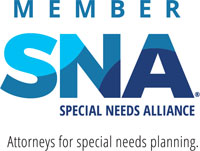Over the last several months we have seen story after story about families being unable to visit their loved ones living in skilled nursing facilities, group homes or other congregate settings. The stories we hear from our friends and colleagues are often heartbreaking, although we fully understand that visitation restrictions have been with a mind toward the greater good.
Mary Alice Jackson, a highly regarded elder law attorney in Sarasota, Florida, wrote an article entitled “Nursing Home Visits: Balancing Help and Harm” for publication by the “Voice”, the monthly newsletter of the Special Needs Alliance. The article focuses on the Centers for Medicare & Medicaid Services (CMS) guidelines for nursing homes (which were revised after great pressure from special interest groups in September of 2020). We have reprinted this article with the permission of the Special Needs Alliance specialneedsalliance.org We thank Mary Alice for her thoughtful and timely piece, and we hope you find it as informative as we did.
NURSING HOME VISITS:
BALANCING HELP AND HARM
By Mary Alice Jackson, Esq.
During the pandemic, families have been separated for months on end from loved ones in residential communities, group homes and nursing homes. For the professionals who run these homes, making the decision to close a campus to family members and loved ones was done after long days of research and discussion about this new and frightening threat, and in response to government regulations. Once the decision to lockdown was made, more long hours were spent developing plans and protocols to keep life as “normal” as possible for residents. But there was nothing normal about withdrawing the human touch, being forbidden from going out or losing contact with everyday friends. Although the early lockdowns were intended to protect residents and staff from the ravages of COVID-19, there have been unintended consequences, and lessons learned. Family members who were used to stopping by at any time were suddenly completely barred, without the opportunity to prepare their loved ones or themselves. Having your loved one cared for by others creates a sense of vulnerability which is soothed by visits to oversee care, and to personally observe how things are going. In the blink of an eye, that access was cut off. No one could resolve the sense of helplessness that distance created. Many people learned to Zoom or FaceTime, but technology is no replacement for physical presence and touch.
Feelings of loneliness caused depression and anxiety, sometimes proving as dangerous to residents (and their families) as the virus itself. Pressured by interest groups and individuals, on September 17, 2020, the Centers for Medicare & Medicaid Services (CMS) revisited its May 2020 guidelines for nursing homes and issued a better-informed set of standards, many of which are appropriate for group homes and residential communities, as well.
The new directive acknowledges that isolation can cause serious harm and that visitation decisions should focus on the totality of an individual’s physical, mental, and psychosocial welfare. When benchmarks are met, visitation becomes a resident’s right which, if denied, can be met with fines and regulatory enforcement. Although some states have passed legislation allowing family members who are “essential caregivers” to have expanded visitation rights—such as longer visits and access regardless of infection levels– the CMS guidelines do not grant special privileges to such individuals.
Potential exposure to the coronavirus remains the paramount concern, and each nursing home is permitted to determine its own visitation rules. But if the facility has seen no new COVID cases within the past 14 days, and incidence of the virus is “low” or “moderate” in the surrounding county, it is required to allow visits, based on reasonable guidelines.
AARP continuously updates a map detailing visitation policies by state. Common recommendations are:
- Conduct visits outdoors whenever possible;
- Limit the number of visitors, typically to no more than two;
- Have specific visiting hours and consider scheduling each visit;
- Wear masks and practice social distancing;
- Ensure that visitors have tested negative for COVID prior to visiting;
- Do not allow physical contact.
All visitation presupposes the availability of adequate personal protective equipment (PPE), as well as the regular screening of residents and staff. This poses an additional challenge, given reported shortages of PPE and test kits.
With winter approaching, outside visits become more difficult, though CMS is providing funds to purchase tents and clear dividers. All visitors must be screened for COVID symptoms, wear masks, use hand sanitizer, and practice social distancing. Signage with instructions about how and where to visit loved ones must be posted throughout the facility.
Since the onset of the COVID-19 crisis, even when the need for institutional care has been urgent, the threat of isolation has kept family members from placing loved ones in nursing homes. Given this new, more flexible approach from CMS, families should contact the nursing homes they are considering to:
- Ask what restrictions are currently in place;
- Advocate for compassionate care visits where appropriate; and
- Ensure the nursing home is following protective procedures.
Even when facilities are largely in lockdown, many states provide for compassionate care visits. Although admitting that it’s impossible to outline all situations that qualify as compassionate care, CMS offers the following examples:
- A newly admitted resident, who was previously living with family, is struggling with the change in environment and lack of physical family support;
- A resident is grieving for a recently deceased friend or family member;
- A resident who needs cueing and encouragement with eating or drinking, previously provided by family and/or caregiver(s), is experiencing weight loss or dehydration; and
- A resident, who used to talk and interact with others, is experiencing emotional distress, seldom speaking, or crying much more frequently than in the past.
As the virus surges in many parts of the country, nursing homes and group homes may, once again, become more restrictive in their visitation policies. But families can now be reassured that the important role that visitors play in a resident’s well-being must be seriously considered and accommodations may be available to protect all aspects of a resident’s health.
















Recent Comments